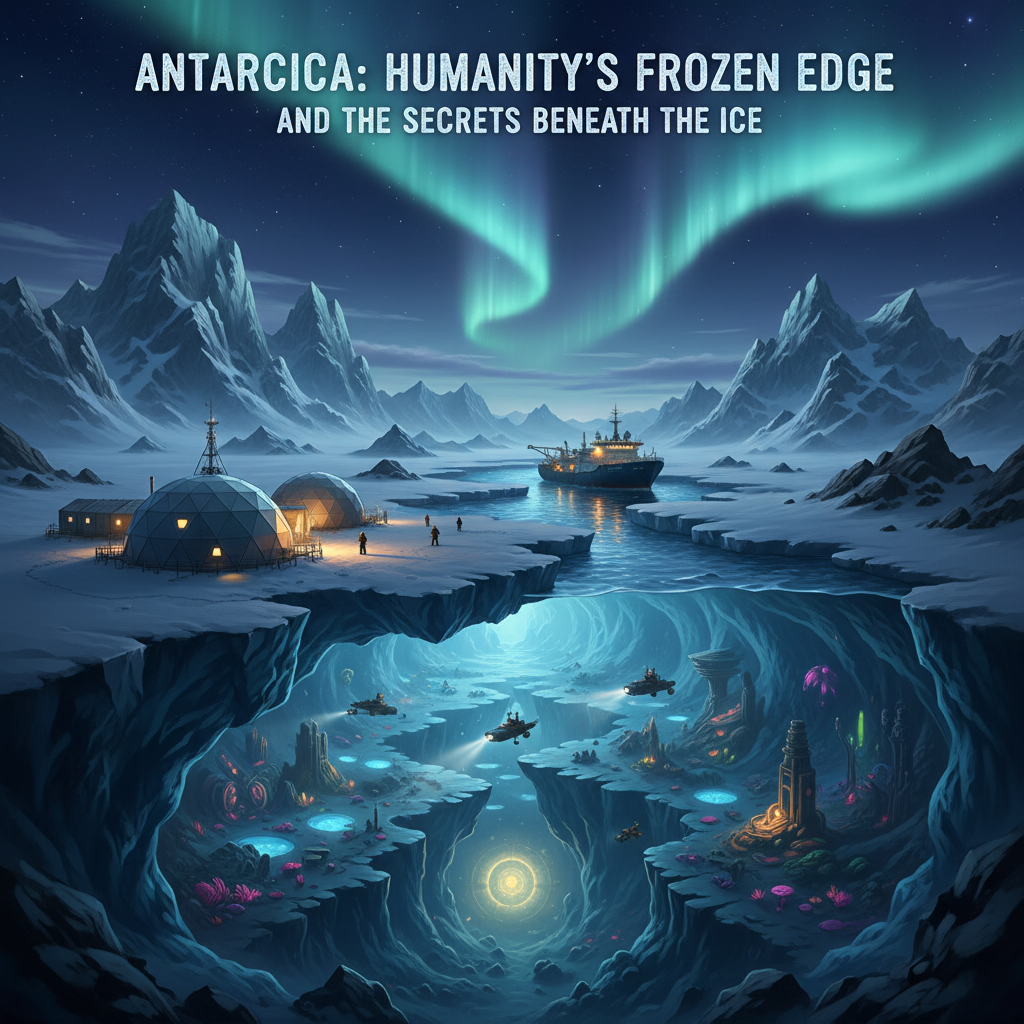Antarctica stands as a remote and enigmatic continent at the southern extremity of the globe. Research indicates that it spans approximately 14 million square kilometers while supporting virtually no permanent human population. Observations reveal that beneath its stark, icy expanse lie vital clues to the Earth’s climatic evolution across geological time scales.
Studies show that millions of years in the past, this region formed part of the supercontinent Gondwana, which linked areas now known as South America, Africa, India, and Australia. Evidence from fossils, including ancient ferns and large reptiles, suggests that the landscape once supported diverse vegetation and animal life, possibly including dinosaurs around 250 million years ago. Tectonic movements gradually positioned the landmass near the South Pole, leading to a profound cooling of the climate over time.
By roughly 34 million years ago, glacial formations had begun to expand, eventually enveloping most of the continent in ice. Current data indicate that the Antarctic ice sheet contains about 60 percent of the world’s freshwater reserves, with thicknesses reaching up to three miles in some areas. This frozen layer preserves a detailed record of atmospheric and temperature changes spanning vast periods.
Historical accounts trace the concept of a southern continent back to ancient Greek philosophers and medieval mapmakers, who theorized about a landmass to counterbalance northern land areas. Actual sightings occurred in 1820, when explorers from Russia, Britain, and the United States, including Bellingshausen, Bransfield, and Palmer, independently documented the icy shores. These early encounters marked the onset of systematic exploration.
During the nineteenth and early twentieth centuries, adventurers faced extreme hardships in their efforts to map and traverse the terrain. The era known as the Heroic Age of Antarctic Exploration yielded remarkable tales of perseverance. Roald Amundsen of Norway achieved the South Pole in 1911, edging out Robert Falcon Scott’s British team, which suffered fatal losses during the journey back. Ernest Shackleton’s 1914 expedition on the Endurance ship encountered disaster when ice crushed the vessel, yet the crew’s survival through extraordinary measures turned the event into a testament to human resilience.
Shifts in focus during the mid-twentieth century transformed Antarctica from a site of competitive achievement into a hub for scientific inquiry. Investigators recognized that the ice layers encapsulated a chronological archive of global environmental shifts, akin to stratified records of past conditions. The International Geophysical Year from 1957 to 1958 fostered international partnerships, resulting in the establishment of numerous research outposts.
This collaborative effort culminated in the Antarctic Treaty of 1959, which designated the continent exclusively for peaceful and research-oriented activities. The agreement prohibited military operations, nuclear experiments, and assertions of sovereignty, offering a model of effective global diplomacy. Such provisions have endured, promoting ongoing scientific endeavors without geopolitical interference.
Advances in technology have illuminated previously concealed features of the continent’s subsurface. Lake Vostok, a vast subglacial body isolated for millions of years, may contain unique microbial ecosystems, as preliminary analyses suggest. Satellite imagery has also exposed buried formations, such as the Gamburtsev Mountains, comparable in scale to the European Alps yet hidden entirely under the ice cap.
Meteorites recovered from the surface provide valuable data on solar system origins, preserved by the consistently low temperatures. Each season, teams venture across vast distances to collect these extraterrestrial specimens from the expansive ice plains. These finds contribute to broader understandings of cosmic history and material compositions.
Climate observations point to accelerating ice melt in Antarctica, driven by rising global temperatures, which could elevate sea levels and endanger low-lying urban areas. Disruptions to glacial stability might alter oceanic circulation and atmospheric dynamics on a planetary scale. Changes originating here extend far beyond the continent, influencing ecosystems and human societies worldwide.
In essence, Antarctica functions not merely as an isolated frozen domain but as a repository of planetary heritage, a arena for testing limits of exploration, and a call to collective stewardship. Amid widespread divisions between nations, the continent exemplifies the potential for unified action toward common goals. The implications embedded in its icy solitude underscore a fundamental truth. The trajectory of Antarctica mirrors the broader path for humanity.


